2.2.3 Knowledge
Course subject(s)
Module 2 – Your Dream House
Analytical Models
Now, let’s have a look at Analytical Models. These types of models show the results and thinking behind the analyses. For example, a very complex building such as a train station can be analysed for its distribution of people during rush hours. The different corridors, staircases, platforms and halls can be coloured according to the amount of people that are moving. In this example, the topic of the analysis would be highlighted in the model. Other aspects could be kept less apparent.
In the sketch models shown in the previous unit, we saw how the materials used in the model can give it meaning. The model is not just what it is, it is actually a representation of thoughts; a number of ideas with a spatial relation. Sketch models are intended to be open for interpretation and they have a conversational role in the design process.
In contrast to sketch models, analytical models should be more clear in what they show, and there should be an instruction about ‘how to read’ the model, similar to a legend next to a map.
EXAMPLE 1
These two images show an analytical model of the entrance space in front of a museum. The models are made of engraved plates of acrylic that show a number of sections of the area. With the help of some LED lights, the plates show how the model can be viewed in an analytical way. This model is notably very abstract in the sense that many irrelevant aspects of the site are left out in order to focus our attention on the streetscape. For example, the model does not show the surface material of the buildings.
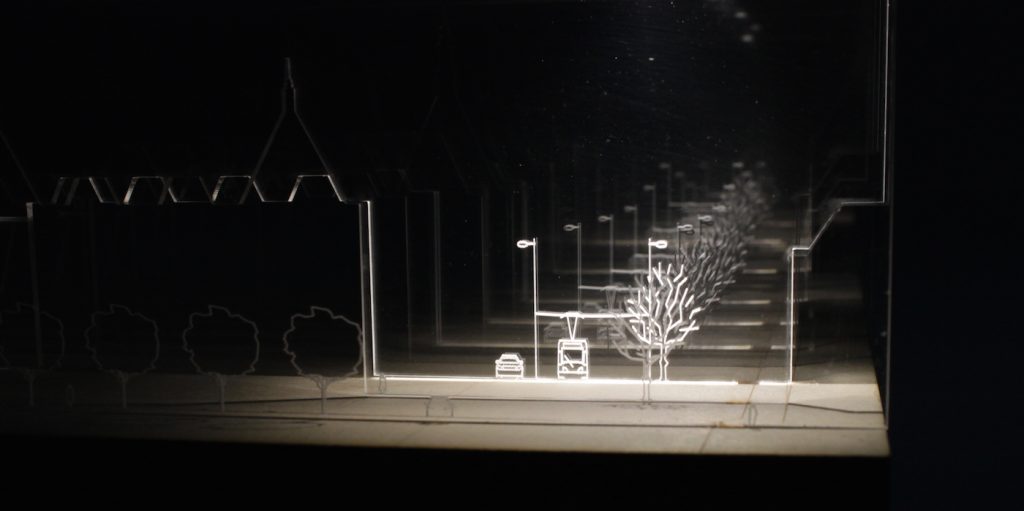
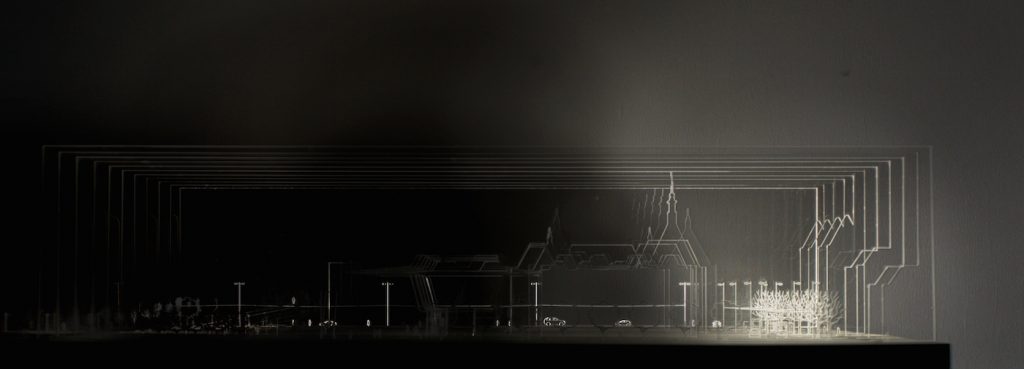
The model is made by Daan Zandbergen, David van Weeghel, Jochem Hols and Mart Bremmer and is part of a small exhibition they made about the Stedelijk Museum in Amsterdam.
EXAMPLE 2
This small animation shows an analysis of the functional areas of the building. Each colour stands for a specific function, which could be described by using a legend to clarify what each colour’s function is. This is a bit similar to a world map with different colours for each country – other geographic information on the map, such as the capitals and names of the countries, will be shown in different ways. Models require the same kind of treatment, where the different elements can be subtly varied to communicate different messages to the viewer.
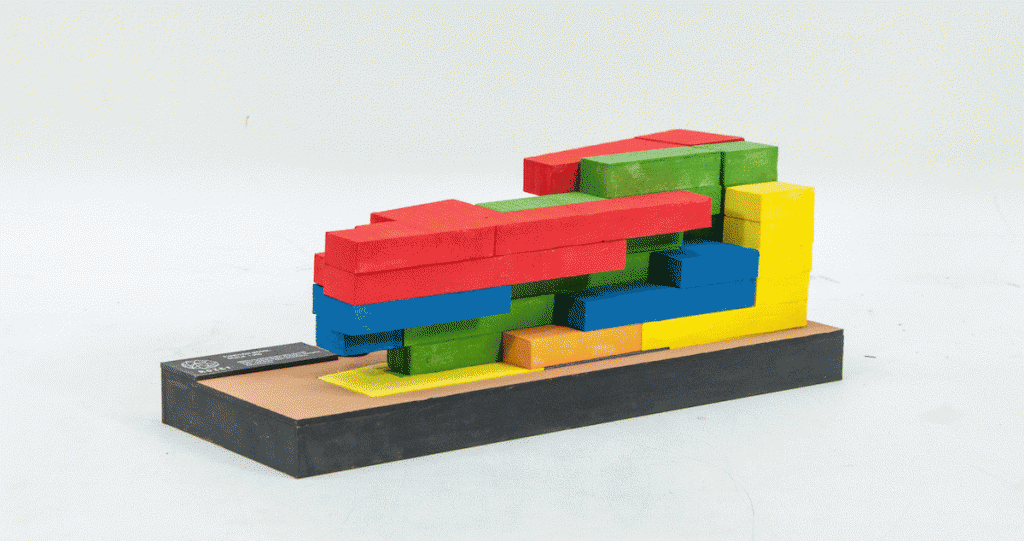
Analytical Models (2014), by: Raphael Reuter, Xinming Li, Cheng Cai.
Project: Rozet, by Neutelings Riedijk Architects, Arnhem, the Netherlands.
EXAMPLE 3
The Eemhuis, by Neutelings Riedijk Architects, is located in an urban redevelopment area, a square which is on the northwest, close to the city centre. It combines a number of existing cultural institutes in the city of Amersfoort: the city library, the exposition centre, the heritage archives and a school for dance, music and visual arts. Here you see two types of analytical models, made by students in the Analytical Models course. The first model has colours to indicate the routing through the building and the different functions. The second model shows a section through the building that shows the spatial composition over several floors.
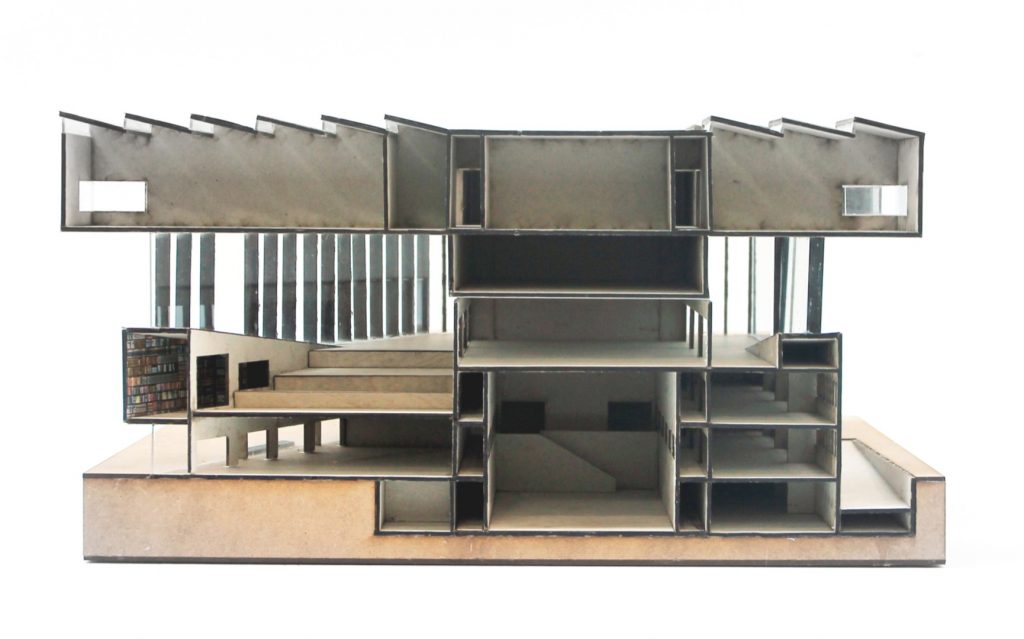
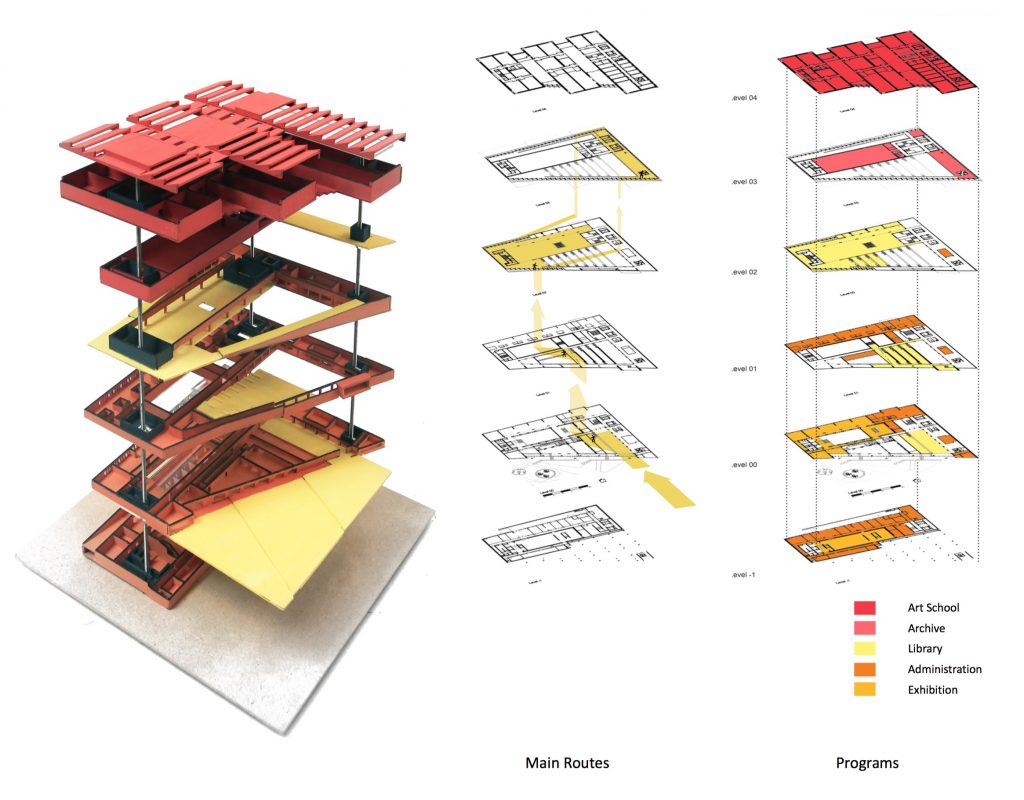
Analytical Models by: Jiani You, Licheng Wang, Wei Jiang and Zhuting Li.
Project: Eemhuis, by Neutelings Riedijk Architects, Amersfoort, the Netherlands.

Models in Architecture by TU Delft OpenCourseWare is licensed under a Creative Commons Attribution-NonCommercial-ShareAlike 4.0 International License.
Based on a work at https://ocw.tudelft.nl/courses/models-architecture-design-physical-digital-models/.



